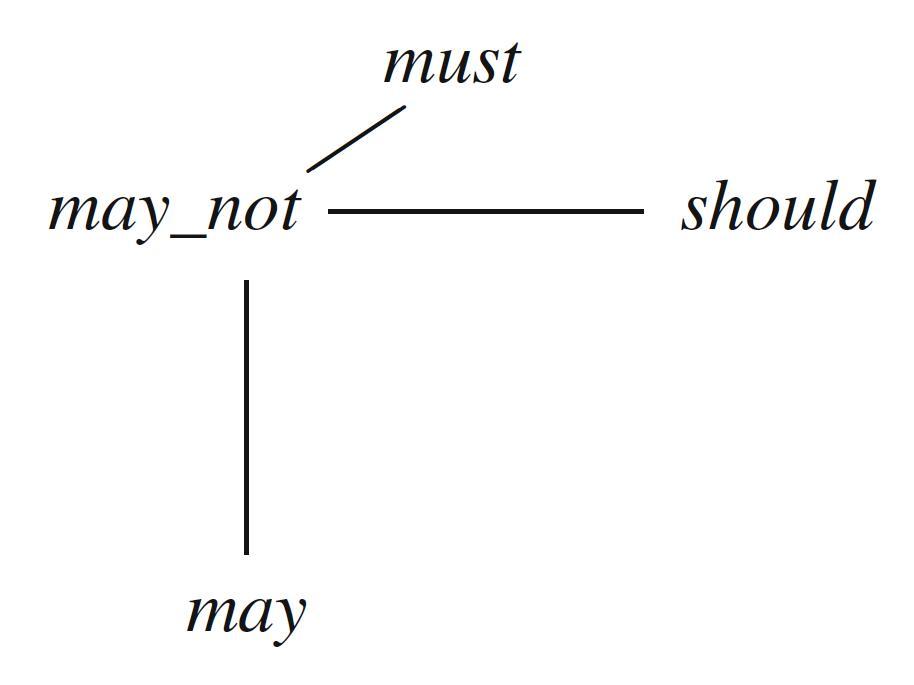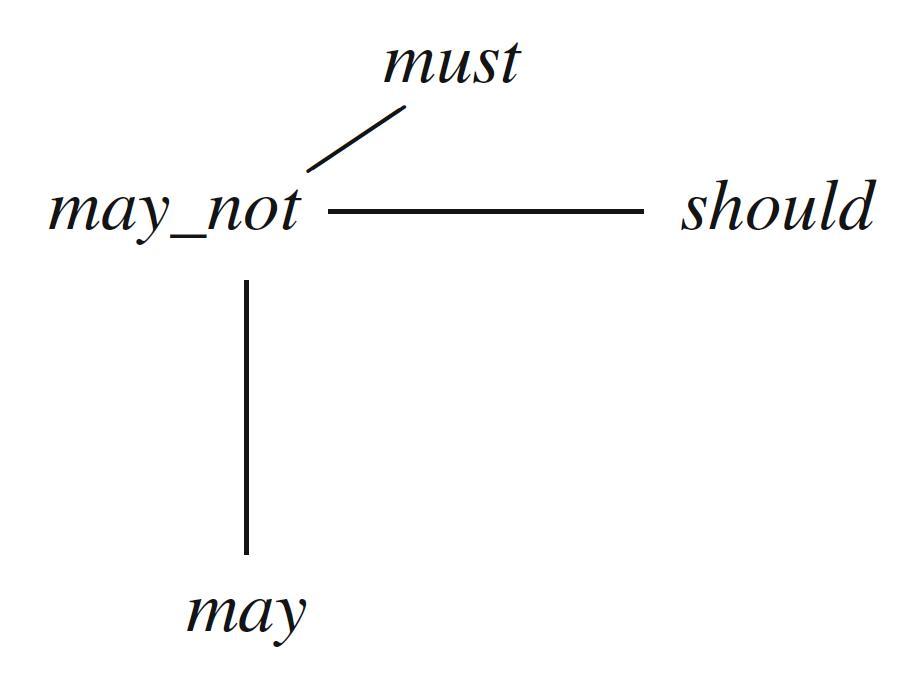
Not Only Barbara (2015), p. 125
by Dekker, Paul

Copyright according to our policy
- Aristotelian family
- Non-Sigma
- Boolean complexity
- 5
- Number of labels per vertex (at most)
- 1
- Uniqueness of the vertices up to logical equivalence
- Yes
- Errors in the diagram
- No
- Shape
- Tetrahedron (irregular)
- Colinearity range
- 0
- Coplanarity range
- 0
- Cospatiality range
- 0
- Representation of contradiction
- N.A.
Logic
Geometry
- Conceptual info
- No
- Mnemonic support (AEIO, purpurea ...)
- No
- Form
- none
- Label type
- linguistic
- Language
- English
- Lexical field
- deontic operators
- Contains partial sentences or single words
- Yes
- Contains abbreviations
- No
- Contains definitions of relations
- No
- Form
- solid lines ,
- none
- Has arrowheads
- No
- Overlap
- No
- Curved
- No
- Hooked
- No
- As wide as vertices
- No
- Contains text
- No
- Label type
- none
Vertex description
Edge description
- Diagram is colored
- No
- Diagram is embellished
- No
Style
Additional notes
- The negation closure of this diagram is (purportedly) a U4 sigma-3, because here, the assumption of 'differential import' (cf. p. 100) does not make sense. For example, consider 'must' (ä) and 'should' (a). In a JSB sigma-3, these two items should be contrary to each other, whereas in a U4 sigma-3 they should be unconnected/independent. And as a matter of fact, it is clear that they are unconnected, in particular, the following two sentences (cf. p. 125) can be true together:
Don must play.
Don should play.
These two sentences are true together in a situation where playing is both necessary and sufficient for Don to meet his requirements. This implies a violation of the 'differential import' assumption, but it constitutes perfectly imaginable situation.
The partition induces by this diagram (subject to existential, but not differential import) consists of the following five anchor formulas (cf. the Gergonne relations!):
$\bullet$ should $\wedge$ must
$\bullet$ should $\wedge$ not must
$\bullet$ may $\wedge$ not should $\wedge$ not must
$\bullet$ not should $\wedge$ must
$\bullet$ may_not